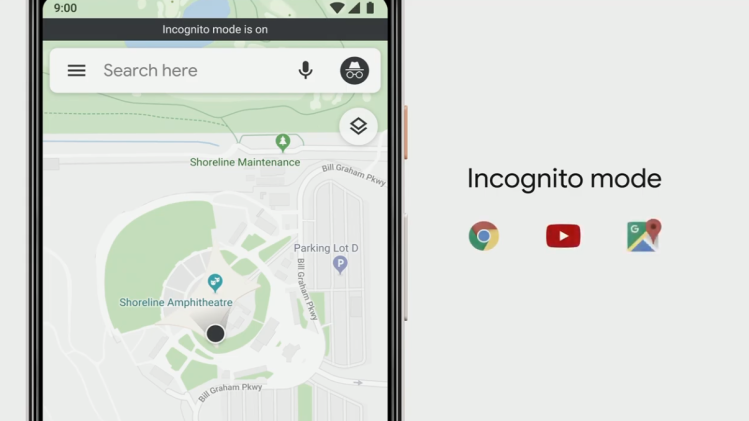testsetset
At I/O 2019, Google announced an incognito mode for Google Maps, inspired by the Chrome browser’s feature of the same name.
It’s as easy as tapping through your profile picture: You’ll see a toggle to turn it on or off. And when it’s enabled, places you search for and navigate to won’t be linked to your account.
Incognito mode will come to other Google apps and services, including YouTube and Google Search, later this year. In YouTube, it’ll build on the Incognito search tool Google introduced in YouTube last year.
Additionally, Google says it’ll make it easier to tap into data controls.
June 5th: The AI Audit in NYC
Join us next week in NYC to engage with top executive leaders, delving into strategies for auditing AI models to ensure fairness, optimal performance, and ethical compliance across diverse organizations. Secure your attendance for this exclusive invite-only event.

“Privacy and security are the foundation for all the work we do,” said CEO Sundar Pichai.
In related news, Google last week announced that in the coming weeks, it’ll roll out a setting that will let users delete location data automatically. From within the Google Account dashboard on mobile and the web, a drop-down option will allow them to select one of two windows — 3 months or 18 months — specifying how long they’d like to retain data. The control will also cover web and app activity (for example, things searched and browsed in Google services like Discover on Android, Maps, Search, Google Play), and Google says that any older data will be deleted on an ongoing basis.
Those improvements come roughly a year after Google revamped Security Checkup with “personalized guidance” tailored to individual accounts and launched predictive phishing protection in Chrome. Late last year, the Mountain View company said it would begin activating security alerts for G Suite admins by default if it believes a company’s systems are being subjected to a government-backed attack. And more recently, Google brought personal data controls — including a new data history view-and-delete feature — directly into Google Search.
In June 2018, Google Account got a makeover on Android. It’s now based on Google’s Material Design language and organizes controls into tabs along the top — Account, Data & Personalization, Security, People & Sharing, and Payments & Subscriptions — and a dedicated support page that links to handy Google forums. Moreover, as part of Google’s Project Strobe initiative, the company said it would roll out a streamlined permissions management view for Google account access prompts; implement a stricter API access policy for the consumer Gmail API; and limit Android apps’ ability to receive call log and SMS permissions on Android devices.
The search giant’s renewed focus on privacy features follows several high-profile headlines over the past year, such as the Facebook and Cambridge Analytica data scandal. A Wall Street Journal report last summer revealed that Google+, Google’s eponymous social network, failed to disclose an exploit that might have exposed the data of more than 500,000 users. Following the news, Google announced that Google+ will formally shut down for consumers in August 2019, following a 10-month wind-down period.


